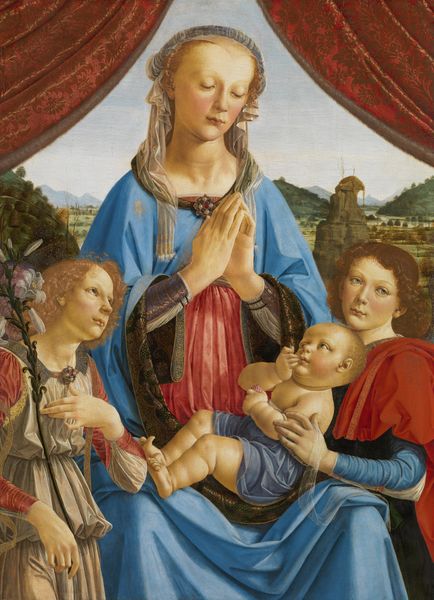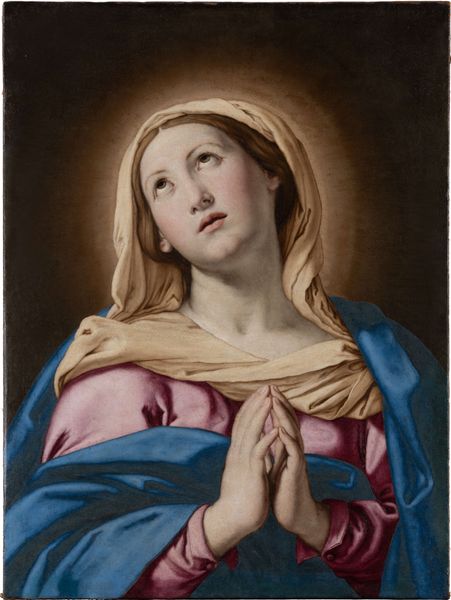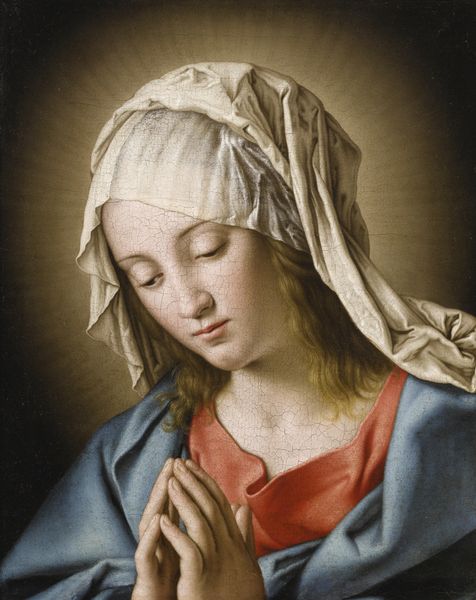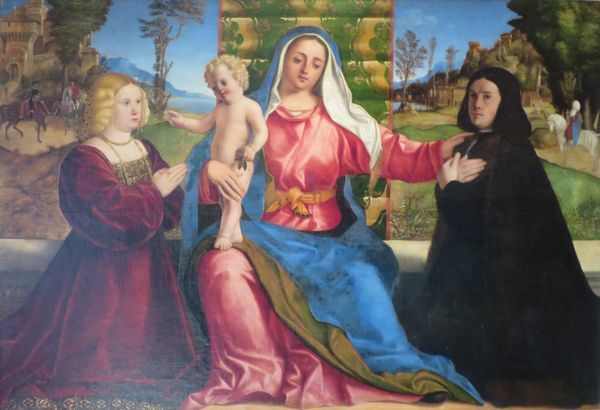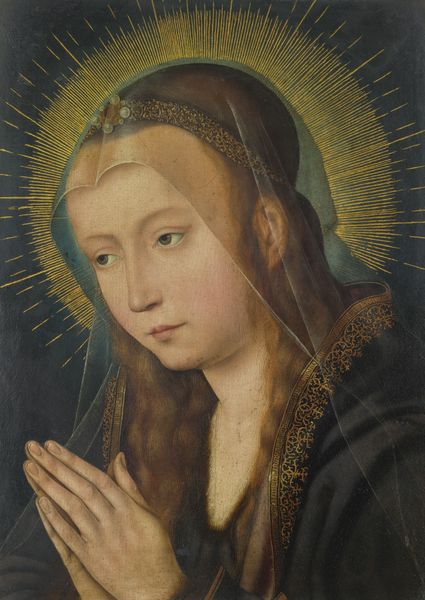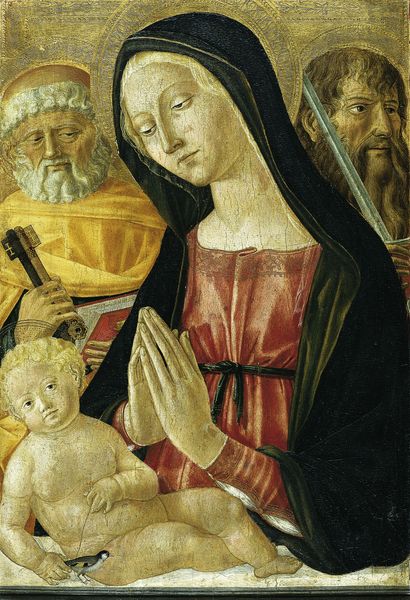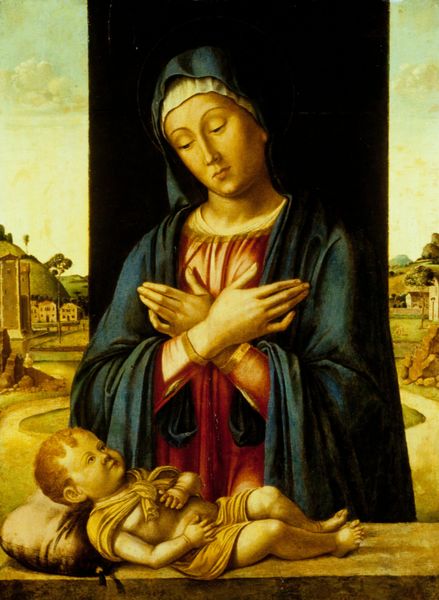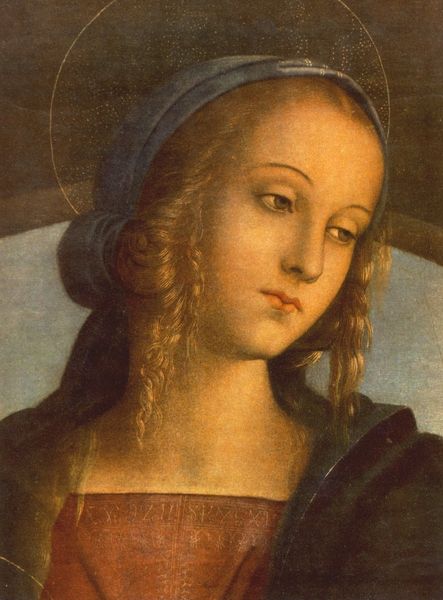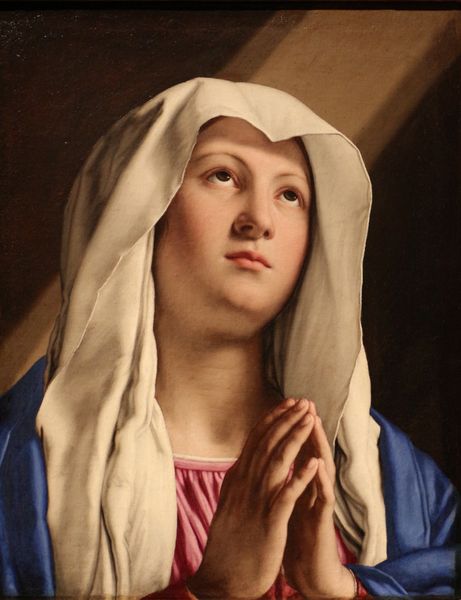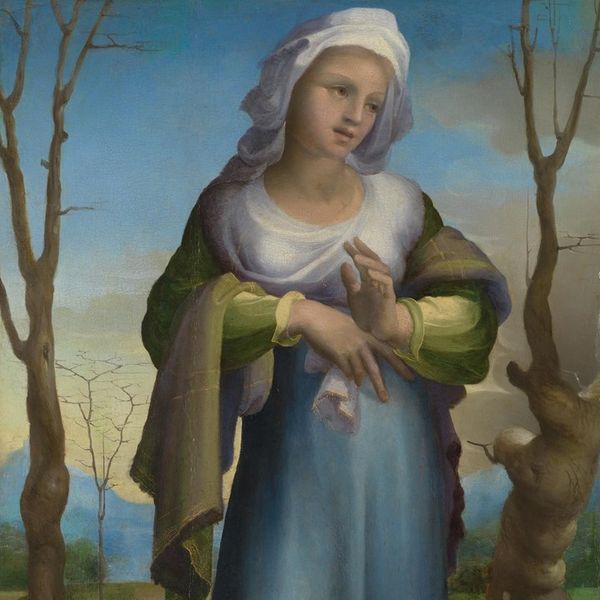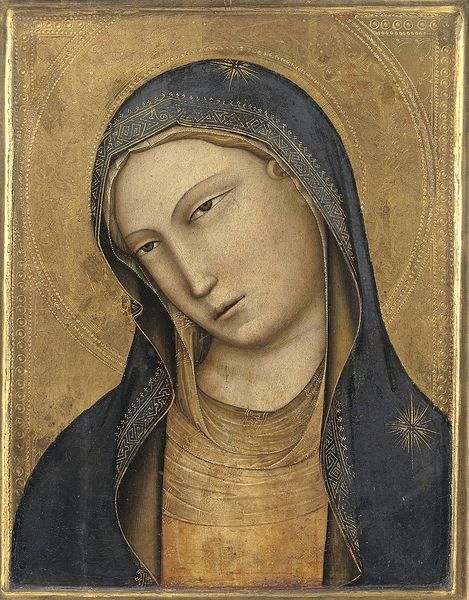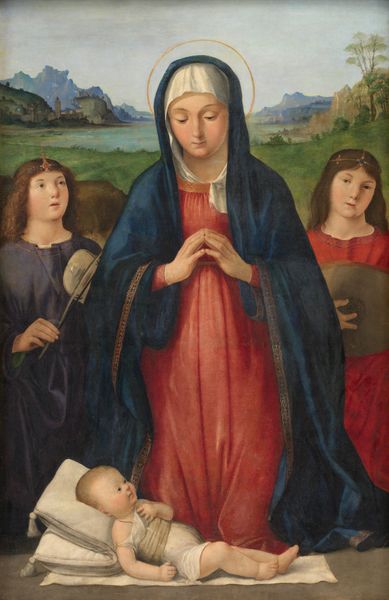
Copyright: Public domain
Andrea del Verrocchio and his workshop made this panel painting of the Virgin and Child, using tempera on wood, in Florence. The smooth surface and luminous colors result from the painstaking process of layering translucent glazes of paint. Verrocchio would have ground his own pigments, and prepared the panel support with gesso. The resulting image presents an idealized vision of motherhood, but the materials also speak to labor and the social context of its creation. Verrocchio ran a large workshop, training artists like Leonardo da Vinci. Collaboration was typical, and the division of labor meant that different hands contributed to different parts of the painting. Some assistants prepared the gesso panels, others ground pigments or applied the underpainting. Considering the time and skill required for each stage, from panel preparation to the final touches, helps us appreciate the value placed on craft and artistic skill in Renaissance Florence.
Comments
No comments
Be the first to comment and join the conversation on the ultimate creative platform.
